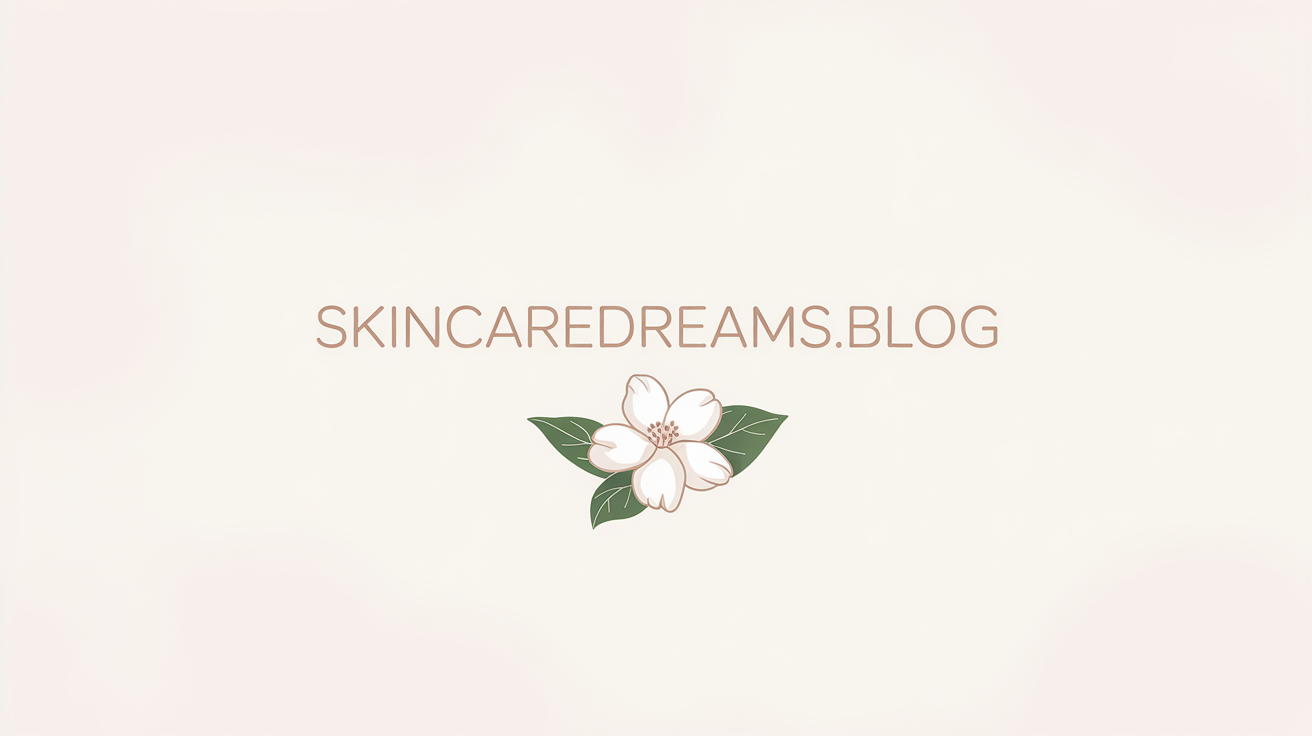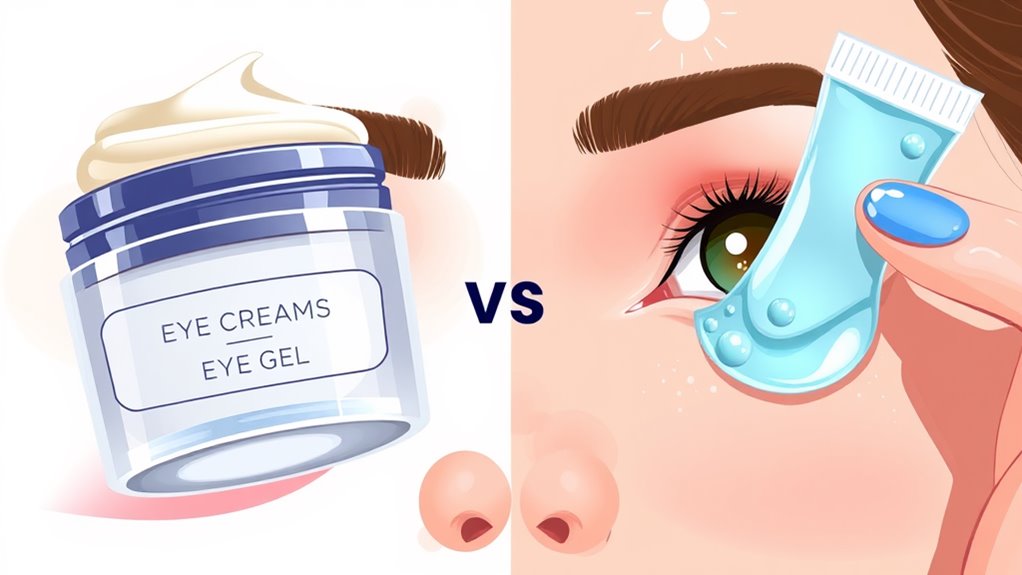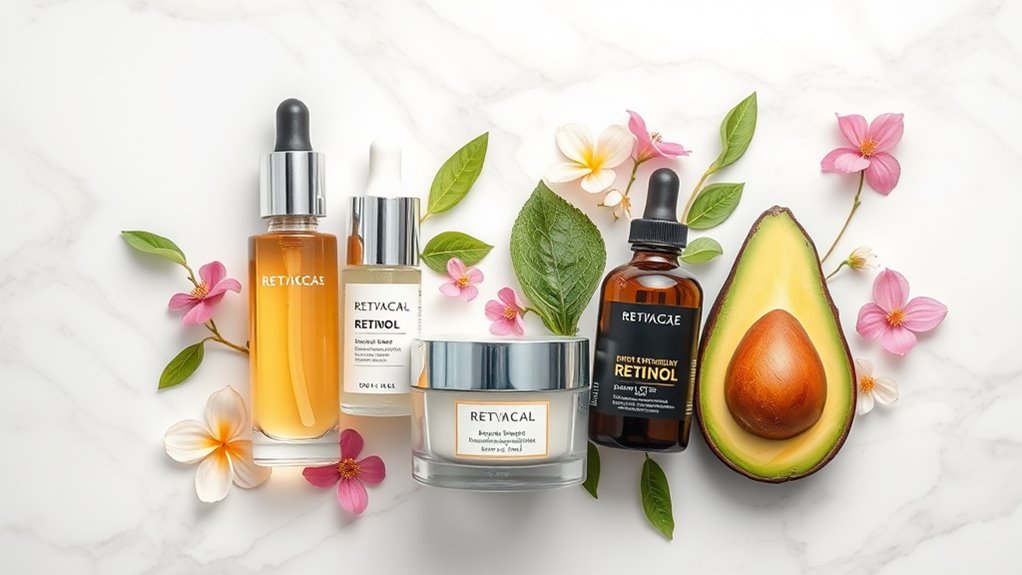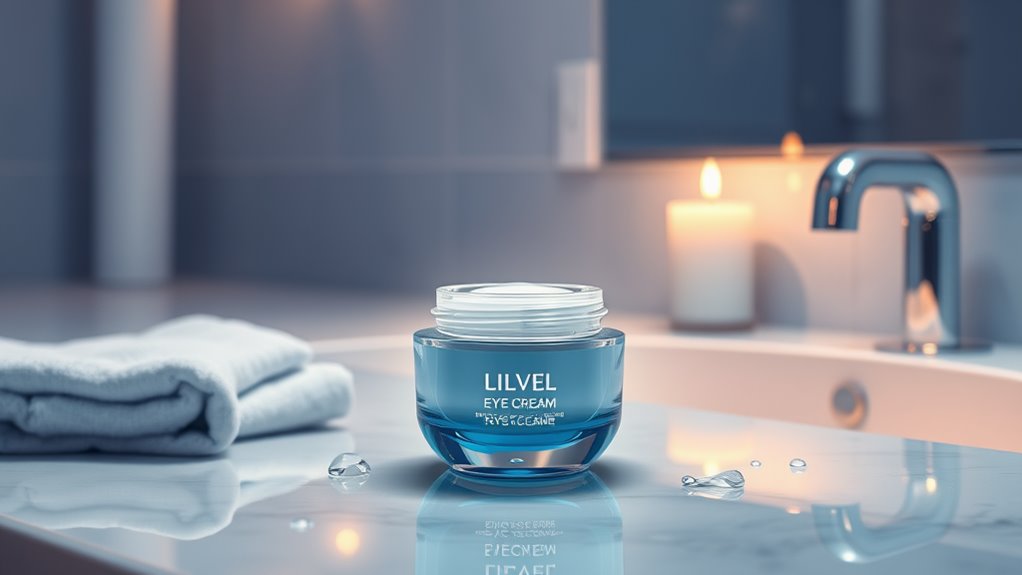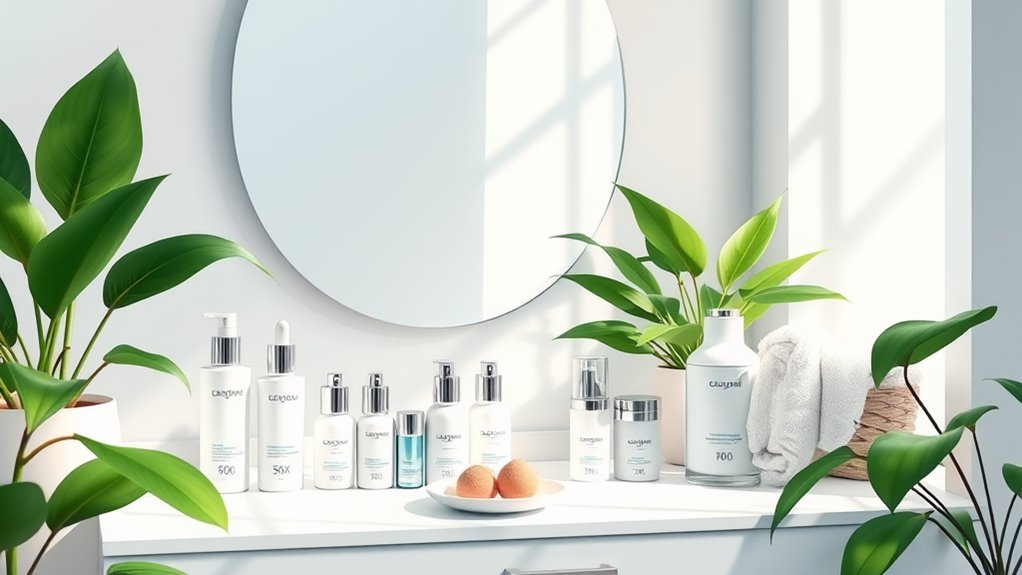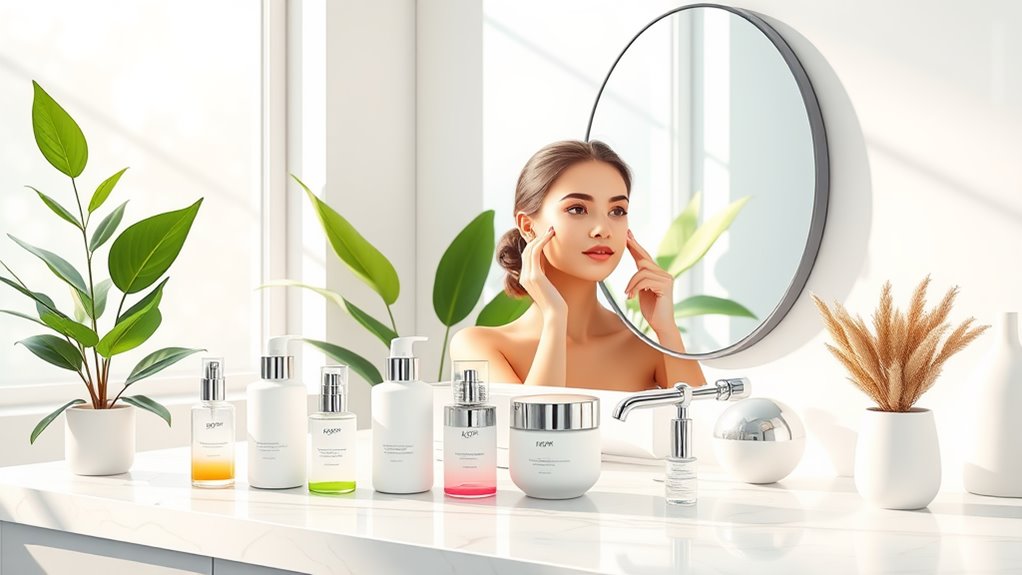Eye Creams vs. Eye Gels: Which One Do You Need-
When it comes to eye care, choosing between eye creams and eye gels can be confusing. Each has its unique benefits tailored to specific skin concerns. You might wonder if your needs lean more towards hydration or a revitalizing boost. Understanding the differences can help you make an informed choice. So, what exactly should you consider when deciding between these two options? Let’s explore the details.
Key Takeaways
- Eye creams are richer and better for targeting fine lines and dryness, while eye gels are lighter and ideal for puffiness and dark circles.
- If you prefer a cooling effect and quick absorption, eye gels are the optimal choice for morning use.
- Eye creams typically contain richer emollients and active ingredients, making them suitable for nighttime hydration.
- For specific concerns like deep hydration and wrinkle reduction, opt for eye creams with peptides and hyaluronic acid.
- Choose eye gels for an immediate refreshing effect, especially if you’re seeking a lightweight solution for tired eyes.
Understanding Eye Creams
When it comes to skincare, understanding eye creams is vital for choosing the right product for your needs.
Eye creams are formulated specifically for the delicate skin around your eyes, targeting concerns like puffiness, dark circles, and fine lines. They often contain rich emollients and active ingredients like peptides and hyaluronic acid that nourish and hydrate the skin, promoting effective eye care. Additionally, using the wrong products or applying them improperly can lead to common eye care mistakes that may worsen your concerns.
When selecting an eye cream, consider your specific issues—whether it’s hydration, anti-aging, or brightening. It’s important to apply them gently, using your ring finger to avoid unnecessary pressure.
Mastering the use of eye creams can greatly enhance your skincare routine, ensuring you maintain a youthful, vibrant appearance. Prioritize your eye care for best results.
Understanding Eye Gels
Eye gels offer a lighter alternative to eye creams, making them ideal for those who prefer a rejuvenating, cooling effect around the eyes. They often contain hydrating agents and soothing ingredients that can reduce puffiness and dark circles. If you’re looking for a quick refresh, eye gels can be your go-to.
Here’s a comparison to help you understand better:
| Feature | Eye Gels | Eye Creams |
|---|---|---|
| Texture | Lightweight, watery | Rich, creamy |
| Absorption | Quick | Slower |
| Best for | Puffiness, hydration | Dryness, anti-aging |
| Application Time | Morning and evening | Evening preferred |
| Cooling Effect | Yes | Minimal |
With this knowledge, you can confidently choose eye gels for a fresh, revitalized look.
Key Ingredients in Eye Creams
Choosing the right eye cream hinges on understanding its key ingredients. Look for peptides, which stimulate collagen production and improve skin elasticity.
Hyaluronic acid is another powerhouse; it hydrates and plumps the skin, reducing the appearance of fine lines.
Caffeine is a fantastic ingredient to combat puffiness as it constricts blood vessels, giving your eyes a refreshed look.
Antioxidants like vitamins C and E protect the delicate skin around your eyes from environmental damage, promoting a youthful appearance.
Additionally, consider ingredients like retinol for cell turnover and niacinamide for brightening dark circles.
Understanding these components will empower you to select an eye cream that effectively addresses your specific concerns and enhances your overall skincare routine.
Key Ingredients in Eye Gels
While eye creams focus on nourishing and moisturizing, eye gels often emphasize lightweight hydration and soothing properties, making them ideal for specific concerns like puffiness and fatigue.
You’ll want to look for key ingredients like hyaluronic acid, which draws moisture to the skin, and caffeine, known for its ability to reduce swelling and dark circles.
Aloe vera and chamomile can provide calming effects, helping to alleviate irritation and redness. Additionally, peptides can support collagen production, improving skin elasticity.
When choosing an eye gel, consider formulations with antioxidants like vitamin C to combat free radical damage.
Skin Concerns Addressed by Eye Creams
For those looking to address specific skin concerns around the eyes, eye creams can offer targeted solutions.
If you’re dealing with fine lines and wrinkles, a cream rich in peptides can stimulate collagen production, enhancing skin elasticity.
Dark circles? Look for formulations containing vitamin C or niacinamide to brighten and reduce pigmentation.
Puffiness often responds well to creams infused with caffeine, which constricts blood vessels and reduces swelling.
Dryness is another common issue, and a cream with hyaluronic acid can provide deep hydration, ensuring your skin remains plump and smooth.
Additionally, some eye creams include antioxidants to combat environmental damage. Incorporating proven ingredients such as licorice extract can further help in fading dark spots and achieving a more even skin tone.
Skin Concerns Addressed by Eye Gels
If you’re seeking a rejuvenating alternative to eye creams, eye gels can effectively tackle various skin concerns around the eyes.
These lightweight formulas are particularly adept at addressing puffiness and dark circles, thanks to their cooling ingredients that provide an immediate invigorating effect. The gel texture also penetrates quickly, delivering hydration without feeling heavy, making it ideal for those prone to milia or sensitivity.
Additionally, eye gels often contain potent actives like caffeine and hyaluronic acid, which work synergistically to firm and brighten the delicate skin.
If you struggle with fine lines or overall fatigue in your eye area, incorporating an eye gel into your routine can be a strategic move for achieving a vibrant and youthful appearance.
Frequently Asked Questions
Can I Use Both Eye Cream and Eye Gel Together?
Yes, you can use both together! Start with the eye gel for hydration, then follow up with the eye cream for added nourishment. This layered approach enhances results, helping you achieve brighter, smoother under-eye skin.
How Long Does It Take to See Results From Eye Products?
You’ll typically notice results from eye products within four to six weeks. Consistent use is key, so stick to your routine, and make sure to observe how your skin responds to different formulations.
Are There Any Side Effects of Using Eye Creams or Gels?
Using eye creams or gels can cause side effects like irritation, redness, or allergic reactions, especially if you’re sensitive to certain ingredients. Always patch test new products to minimize risks and guarantee compatibility with your skin.
When Should I Apply Eye Cream or Gel in My Routine?
You should apply your eye cream or gel after cleansing and toning, but before moisturizing. This guarantees maximum absorption and effectiveness, helping to address concerns like puffiness and dark circles in your skincare routine.
Can Eye Creams or Gels Help With Dark Circles or Puffiness?
Yes, eye creams or gels can help reduce dark circles and puffiness. They often contain ingredients like caffeine or peptides that stimulate circulation and hydrate, making your under-eye area appear brighter and more refreshed.
Conclusion
Ultimately, the choice between eye creams and eye gels boils down to your unique skincare needs. If you’re looking for deep hydration and want to target fine lines and dryness, eye creams are your best bet. On the other hand, if you want a lightweight solution to tackle puffiness and dark circles, eye gels are the way to go. Assess your skin concerns and preferences, and you’ll find the perfect product to keep your eyes looking their best.
